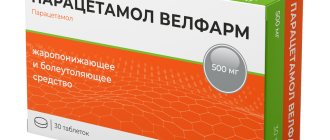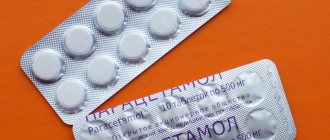Zidolam-AB® (Zidolam-AB)
This section provides specific instructions regarding the use of abacavir, lamivudine and zidovudine. There are no additional special instructions relating to the combination drug Zidolam-AB®.
| Hypersensitivity reactions The use of abacavir is associated with a risk of developing hypersensitivity reactions (HSR), characterized by fever and/or rash and other symptoms indicative of multiple organ damage. HSRs have been observed with the use of abacavir, some of which have been life-threatening and, in rare cases, have resulted in death if appropriate treatment is not provided. The risk of developing HSR to abacavir is increased in patients who test positive for the HLA-B*5701 allele. However, abacavir HSRs were observed at a lower frequency in patients who were not carriers of this allele. The following rules should be followed: — The status regarding the HLA-B*5701 allele must be established before starting abacavir therapy. - Under no circumstances should treatment with Zidolam-AB® be started in patients with a positive status for the HLA-B*5701 allele, as well as in patients with a negative status for HLA-B*5701 in whom HSR was previously suspected abacavir during therapy with abacavir. — If HSR is suspected, therapy with Zidolam-AB® should be stopped immediately even in the absence of the HLA-B*5701 allele. Delay in stopping therapy with Zidolam-AB® after the occurrence of HSR may lead to the development of a life-threatening reaction. — After stopping treatment with Zidolam-AB® due to suspected HSR, under no circumstances should the use of Zidolam-AB® or any other medicines containing abacavir be resumed. — Resumption of abacavir-containing medications following a suspected abacavir HSR may result in a typical return of symptoms within a few hours. Repeated HSR is usually more severe than the initial presentation and may include life-threatening hypotension and death. — Patients with suspected HSR should be instructed to hand over any remaining Zidolam-AB® to their prescriber to avoid restarting abacavir. Clinical picture of HSR to abacavir HSRs to abacavir have been well studied in clinical trials and during post-marketing surveillance. Symptoms usually appear within the first 6 weeks (median time of onset of this reaction is 11 days) after starting abacavir therapy, but these reactions can develop at any time during therapy. Almost all HSRs to abacavir include fever and/or rash. Other signs and symptoms that have been observed with abacavir HSR include respiratory and gastrointestinal symptoms, which may lead to misdiagnosis of HSR as a respiratory disease (pneumonia, bronchitis, pharyngitis) or gastroenteritis. As treatment continues, symptoms associated with HSR increase in severity and may become life-threatening. Typically, these symptoms disappear after stopping abacavir. In rare cases, patients who discontinued abacavir for reasons other than HSR symptoms also developed life-threatening reactions within a few hours of resuming abacavir therapy. Reinitiation of abacavir treatment in such patients should only be done if prompt access to medical care is available. Lactic acidosis Cases of lactic acidosis, usually with hepatomegaly and hepatic steatosis, have been reported with the use of zidovudine. Early manifestations (symptomatic hyperlactatemia) include minor digestive symptoms (nausea, vomiting and abdominal pain), general malaise, loss of appetite, weight loss, respiratory symptoms (rapid and/or deep breathing) or neurological symptoms (including including motor weakness). Lactic acidosis has a high mortality rate and can develop in the setting of pancreatitis, liver failure, or renal failure. Lactic acidosis usually develops after several months of treatment. Treatment with zidovudine should be discontinued if symptomatic hyperlactatemia and metabolic acidosis/lactic acidosis, progressive hepatomegaly or a rapid increase in aminotransferase activity develop. Caution should be exercised when using zidovudine to treat any patient (especially obese women) with hepatomegaly, hepatitis or other known risk factors for liver damage and hepatic steatosis (including the use of certain drugs and alcohol consumption). Patients coinfected with hepatitis C virus and treated with interferon alfa and ribavirin may be at particular risk. Patients at increased risk should be closely monitored. |
Mitochondrial dysfunction due to in utero exposure
Analogues of nucleosides and nucleotides are capable of affecting mitochondrial function to varying degrees, which is most clearly manifested with the use of stavudine, didanosine and zidovudine. Cases of mitochondrial dysfunction have been reported in HIV-negative children who were exposed to nucleoside analogues in utero and/or after birth; This mainly applies to treatment regimens that include zidovudine. The main adverse reactions were hematological disorders (anemia, neutropenia) and metabolic disorders (hyperlactatemia, hyperlipasemia). These adverse reactions were often transient. Rare late-onset neurological disorders (hypertension, seizures, behavioral disturbances) have been reported. Whether these neurological disorders are transient or permanent is currently unknown. The possibility of mitochondrial dysfunction should be considered in any child exposed in utero to nucleoside and nucleotide analogues with significant clinical symptoms of unknown etiology, especially neurological disorders. The data presented do not affect current national recommendations for the use of APT in pregnant women to prevent vertical transmission of HIV infection.
Lipoatrophy
Treatment with zidovudine was accompanied by loss of subcutaneous fat, which is due to mitochondrial toxicity. The incidence and severity of lipoatrophy are related to cumulative exposure. This fat loss, which is most pronounced in the face, limbs and buttocks, may be irreversible after switching to a treatment regimen that does not contain zidovudine. During therapy with zidovudine and drugs containing zidovudine, patients should be regularly monitored for signs of lipoatrophy. If the development of lipoatrophy is suspected, switch to an alternative treatment regimen.
Weight and metabolic parameters
During antiretroviral therapy, weight gain and increases in blood lipid and glucose concentrations may occur. Disease control and lifestyle may also contribute to this process. In some cases, there has been evidence linking increases in lipid concentrations to therapy, but there is no strong evidence linking weight gain to any specific therapy. Determination of blood lipid and glucose concentrations should be carried out in accordance with established guidelines for the treatment of HIV infection. Lipid imbalances must be corrected according to clinical manifestations.
Adverse reactions from the blood system
Anemia, neutropenia and leukopenia (usually secondary to neutropenia) can be expected in patients treated with zidovudine. Most often, these phenomena develop when using higher doses of zidovudine (1200-1500 mg/day), as well as in patients with reduced bone marrow reserve before treatment, especially in the late stages of HIV infection. Therefore, in patients taking the drug Zidolam-AB®, it is necessary to carefully monitor hematological parameters.
These hematological disorders usually occur no earlier than 4-6 weeks after the start of therapy. For symptomatic patients with advanced HIV infection, blood tests are recommended at least every two weeks for the first three months of therapy and at least once a month thereafter. In patients with early stage HIV infection, adverse blood reactions are uncommon. Depending on the patient's general condition, blood tests may be performed less frequently, for example every 1-3 months. If severe anemia or myelosuppression develops during treatment with Zidolam-AB®, as well as in patients with pre-existing bone marrow dysfunction, for example, with a hemoglobin concentration below 9 g/dL (5.59 mmol/L) or a neutrophil count of less than 1 ,0×109/l, zidovudine dose adjustment may be required. Since dose adjustment is not possible when using the drug Zidolam-AB®, such patients should be prescribed zidovudine, abacavir and lamivudine as separate drugs. For more detailed information, please refer to the instructions for use of the individual preparations of zidovudine, abacavir and lamivudine.
Pancreatitis
Rare cases of pancreatitis have been reported in patients treated with abacavir, lamivudine and zidovudine. However, it is unclear whether these cases are drug-related or a consequence of HIV infection. If clinical signs, symptoms or laboratory abnormalities appear that suggest the possibility of developing pancreatitis, treatment with Zidolam-AB® should be stopped immediately.
Liver diseases
If lamivudine is used concomitantly to treat HIV infection and hepatitis B virus infection, please refer to the prescribing information for lamivudine 100 mg dosages for additional information regarding the use of lamivudine for the treatment of hepatitis B infection. The effectiveness and safety of Zidolam-AB® have not been established in patients with severe concomitant liver diseases. The drug Zidolam-AB® is contraindicated in patients with impaired liver function. Patients with chronic hepatitis B or C receiving cART are at increased risk of developing severe and potentially fatal hepatic adverse reactions. In case of concomitant antiviral therapy for hepatitis B or C, you should also read the corresponding instructions for the use of these drugs.
When discontinuing the use of Zidolam-AB® in patients with coinfection with the hepatitis B virus, periodic monitoring of liver function and markers of hepatitis B virus replication is recommended, since discontinuation of lamivudine may lead to exacerbation of hepatitis.
Patients with pre-existing liver dysfunction, including active chronic hepatitis, have an increased incidence of liver dysfunction during cART. Such patients should be monitored in accordance with standard clinical practice. Suspension or discontinuation of treatment should be considered if worsening liver disease occurs in such patients.
Concomitant viral hepatitis B or C
The simultaneous use of zidovudine and ribavirin is not recommended due to the increased risk of anemia.
Children and teenagers
Due to the impossibility of dose adjustment, the use of the drug Zidolam-AB® is contraindicated in children and adolescents under the age of 12 years and/or with a body weight of less than 40 kg.
Immune reconstitution syndrome
In HIV-infected patients with severe immunodeficiency at the time of initiation of cART, an inflammatory reaction may develop in response to the activation of pathogens of asymptomatic or residual opportunistic infections, which can cause serious deterioration of the condition or aggravation of symptoms. These reactions usually occur within the first few weeks or months after starting cART. Typical examples are cytomegalovirus retinitis, generalized and/or focal infection caused by mycobacteria, and pneumonia caused by Pneumocystis jirovecii.
The appearance of any symptoms of inflammation requires examination and, if necessary, treatment. Autoimmune diseases (such as Graves' disease, autoimmune hepatitis) have also been observed during immune reconstitution, but the timing of initial manifestations varies and the disease may occur many months after the start of therapy.
Osteonecrosis
Although the etiology of this disease is multifactorial (including the use of glucocorticosteroids, alcohol consumption, severe immunosuppression, high body mass index), cases of osteonecrosis were most often observed in patients at an advanced stage of HIV infection and/or on long-term cART. Patients should consult a doctor if they experience joint pain and stiffness or difficulty moving.
Opportunistic infections
Patients should be informed that the use of Zidolam-AB® or any other antiretroviral drugs does not cure HIV infection and does not exclude the possibility of developing opportunistic infections and other complications of HIV infection. Therefore, patients should remain under close clinical supervision by a physician experienced in the treatment of HIV-associated diseases.
Myocardial infarction
Observational studies have demonstrated an association between the development of myocardial infarction and the use of abacavir. They involved mainly patients who had previously received APT. Data from clinical studies have shown a limited number of cases of myocardial infarction and cannot exclude a slight increase in the risk of its occurrence. Overall, data from observational cohorts and randomized trials are somewhat inconsistent and thus do not allow conclusions about a causal relationship between abacavir therapy and the risk of myocardial infarction. To date, no biological mechanism has been identified to explain the potential increase in risk. When prescribing Zidolam-AB®, measures should be taken to minimize all modifiable factors (for example, smoking, hypertension and hyperlipidemia).
HIV transmission
Although effective viral suppression with APT has been shown to significantly reduce the risk of transmitting HIV to others through sexual contact, this risk cannot be completely eliminated. Precautions to prevent HIV transmission should be taken in accordance with national guidelines.
Drug interactions
Currently, there is insufficient data on the effectiveness and safety of the simultaneous use of Zidolam-AB® with NNRTIs and PIs.
The drug Zidolam-AB® should not be used simultaneously with drugs containing lamivudine or emtricitabine.
The simultaneous use of stavudine and zidovudine should be avoided.
The use of lamivudine in combination with cladribine is not recommended.
Patient Warning Card
Attention!
Zidolam-AB®, film-coated tablets abacavir + zidovudine + lamivudine
Always carry this card with you
Since Zidolam-AB® contains abacavir, some patients taking Zidolam-AB® may develop a hypersensitivity reaction (serious allergic reaction), often life-threatening, if the drug is not discontinued.
IMMEDIATELY CONTACT YOUR DOCTOR for advice about the possibility of further taking Zidolam-AB® if:
- you develop a skin rash OR
- You have one or more symptoms from at least two of the following:
- fever;
- shortness of breath, sore throat or cough;
- nausea or vomiting, abdominal pain, diarrhea;
- increased fatigue, pain or general malaise.
If you stop taking Zidolam-AB® as a result of this reaction, NEVER TAKE IT AGAIN
the drug Zidolam-AB® or any other drug containing abacavir, as this can immediately lead to a life-threatening drop in blood pressure or death.
Paracetamol Renewal, 500 mg, tablets, 10 pcs.
Symptoms
The clinical picture of acute overdose develops within 24 hours after taking paracetamol. Gastrointestinal disorders appear (nausea, vomiting, loss of appetite, discomfort in the abdominal cavity and (or) abdominal pain), pallor of the skin. When administered simultaneously to adults of 7.5 g or more or to children of more than 140 mg/kg, cytolysis of hepatocytes occurs with complete and irreversible liver necrosis, the development of liver failure, metabolic acidosis and encephalopathy, which can lead to coma and death. Ingestion of 5 g or more of paracetamol can lead to liver damage in the presence of risk factors (long-term treatment with carbamazepine, phenobarbital, phenytoin, primidone, rifampicin, St. John's wort or other drugs that are inducers of microsomal liver enzymes; ethanol abuse, glutathione deficiency, digestive disorders , cystic fibrosis, HIV infection, fasting, cachexia). 12-48 hours after the administration of paracetamol, there is an increase in the activity of microsomal liver enzymes, lactate dehydrogenase, bilirubin concentration and a decrease in prothrombin content. Clinical symptoms of liver damage appear 2 days after an overdose of the drug and reach a maximum on days 4-6. In case of overdose, intoxication is possible, especially in elderly patients, children, patients with liver diseases (caused by chronic alcoholism), in patients with nutritional disorders, as well as in patients taking inducers of microsomal liver enzymes, and fulminant hepatitis, liver failure, cholestatic hepatitis, cytolytic hepatitis, sometimes fatal. In severe cases of overdose, encephalopathy (impaired brain function), cerebral edema, bleeding, hypoglycemia, and even death may develop as a result of liver failure. It is possible to develop acute renal failure with acute tubular necrosis, the characteristic signs of which are pain in the lumbar region, hematuria (admixture of blood or red blood cells in the urine), proteinuria (increased protein in the urine), while severe liver damage may be absent. There have been cases of heart rhythm disturbances and pancreatitis.
Treatment
Immediate hospitalization. If you suspect an overdose, even in the absence of pronounced first symptoms, you must stop using paracetamol and immediately seek medical help. The level of paracetamol in the blood plasma should be determined, but not earlier than 4 hours after the overdose (earlier results are unreliable). Laboratory tests of the activity of microsomal liver enzymes should be carried out at the beginning of treatment and then every 24 hours. The introduction of SH-group donors and precursors for the synthesis of glutathione-methionine and acetylcysteine is most effective in the first 8 hours.
Symptomatic treatment: within 1 hour after an overdose, it is recommended to lavage the stomach and take enterosorbents (activated carbon and others). In most cases, the activity of microsomal liver enzymes returns to normal within 1-2 weeks. In very severe cases, a liver transplant may be required. Administration of acetylcysteine within 24 hours of an overdose. The maximum protective effect is provided during the first 8 hours after an overdose; over time, the effectiveness of the antidote drops sharply. If necessary, acetylcysteine is administered intravenously. In the absence of vomiting, methionine can be used before the patient is admitted to the hospital. The need for additional therapeutic measures (further administration of methionine, intravenous administration of acetylcysteine) is determined depending on the concentration of paracetamol in the blood, as well as the time elapsed after its administration. Treatment of patients with severe liver dysfunction 24 hours after taking paracetamol should be carried out in conjunction with specialists from a poison control center or specialized liver disease department.




